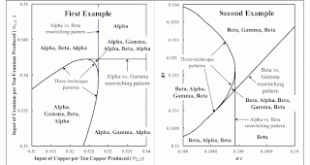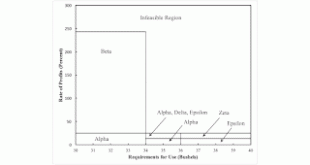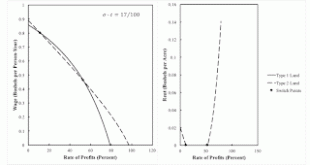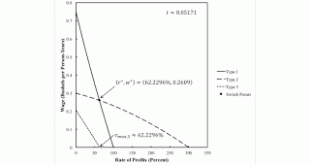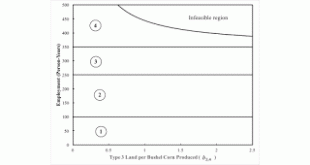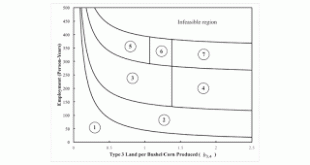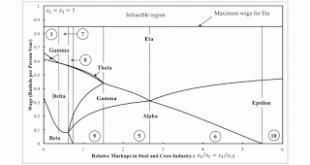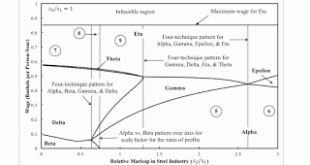Table 1: A Common Structure Example1.0 Introduction This post presents partitions of (a part of) parameter space for two examples of models of prices of production with a choice of technique. The examples have a different structure and are parametrized differently. Yet, I want to argue, the partitions are the same, at some level of abstraction. 2.0 Thing 1 The first example is an instance of the Samuelson-Garegnani model. Table 1 presents the coefficients of production for this example....
Read More »How To Find Fluke Switch Points
Figure 1: Convergence to a Pattern of Switch Points over the Axis for the Rate of Profits1.0 Introduction This post illustrates how to find fluke switch points. As usual, I proceed by example, in this case, as taken from my paper in Structural Change and Economic Dynamics. 2.0 Technoplogy In this example of a capitalist economy, two commodities, iron and corn, are produced. One process is known for producing iron. In the iron industry, workers use inputs of iron and corn to produce an...
Read More »An Intensive Rent Example From Freni
Figure 1: A Pattern Diagram1.0 Introduction Aside, perhaps from the above visualization, nothing novel is presented in this post. It follows an example presented by Freni (1991). I know of this example from problems 7.7 and 7.29 in Kurz and Salvadori (1995). The oddities of this example can be seen in an earlier and more complicated example from D'Agata (1983). This is an example of intensive rent. When the requirements for use are large enough, capitalists will use more than one process...
Read More »Extensive Rent For A Reswitching Example
Figure 1: Wage Curves and Rent1.0 Introduction I might as well illustrate an example with extensive rent and reswitching. I find it incredible that the agents in these sorts of models understand the implications of, say, a variation of the distribution of income for their self-interests. Nevertheless, I try to note the consequences of variation in the distribution of income and perturbations of model parameters on prices of production. And I do not worry too much about disequilibria. 2.0...
Read More »Structural Dynamics With Extensive Rent
Figure 1: Variation in Switch Points with Time1.0 Introduction This post continues my effort to understand how fluke cases can partition parameter spaces in models of prices of production with extensive rent. Some background for this post is here, here, and here. 2.0 Technology The technology is described by the coefficients of production in Table 1. I assume that requirements for use are such that they cannot be satisfied by cultivating only two types of land. After fully cultivating...
Read More »Fluke Cases for the Order of Fertility
Figure 1: Wage Curves for Fluke Case for r-Order of Fertility1.0 Introduction This post illustrates two fluke cases that can arise in a model with land and extensive rent. I call these a pattern of switch points for the r-order of fertility and a pattern of switch points for the w- order of fertility. I have previously described a fluke case in the order of rentability, which can be either over the wage axis or over the axis for the rate of profits. These fluke cases can arise in an...
Read More »Flukes In A Modification Of An Example With Land
Figure 1: A Partition of a Slice of the Parameter Space1.0 Introduction This post presents another example from Woods (1990). It is a modification of this example. That previous example demonstrates that the order of fertility - the order in which lands of various types and that support different processes of production are taken into cultivation - varies with distribution. If the wage were different, the order of fertility could be different. Furthermore, the order of rentability - the...
Read More »Flukes In An Example With Land
Figure 1: A Partition of a Slice of the Parameter Space1.0 Introduction This post tells a story in which owners of a certain type of land find the amount of their land needed to produce net output declines. Wages stay constant, and the rent for some landlords increases. This example is generalized from Woods (1990). 2.0 Technology This an example (Table 1) of a capitalist economy in which two commodities, iron and corn, are produced. One process is known for producing iron. In the iron...
Read More »Perturbations Of Markups In Iron Industry In An Example With Produced Iron, Steel, And Corn
Figure 1: Switch Points Varying With Perturbations In Markup In Iron Industry I have created an example with three produced commodities and a choice of technique. The three produced commodities are called iron, steel, and corn. Corn is taken to be the numeraire and the only commodity purchased by households for consumption. Markups are assumed to vary among industries, even when prices of production prevail. I was able to locate various fluke switch points in that example. The fluke switch...
Read More »Variation In Switch Points With Markups
Figure 1: Variation of Switch Points with the Markup in the Steel Industry1.0 Introduction I want to continue to analyze this example. This example does not do everything I would like with a three-commodity example. Specifically, I do not have a case of triple-switching in the parameter space I explore in this post. That space of relative markups, in a model with n industries, has (n - 1) dimensions. And it is partitioned by (n - 2)-dimensional manifolds, where each manifold corresponds to...
Read More » Heterodox
Heterodox

